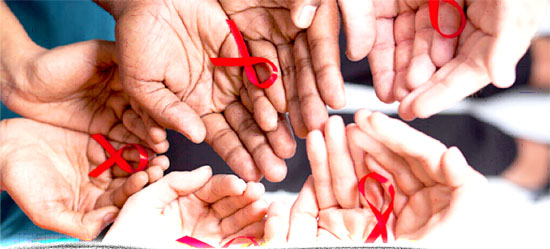
Fight against HIV and AIDS can be won
In March 1986 when the first AIDS case was reported in Ghana, there was a general sense of denial or indifference to the pandemic. It was not surprising, as people thought it was a disease that was not meant for our part of the world.
There were even those who were of the view that the AIDS story had been concocted to discourage people from indulging in immoral lifestyles. But more people became alarmed when the single case reported in March 1986 jumped astronomically to 26 by the end of the year.
Advertisement
There was the urgent need to tackle the disease head-on to stem the rate of spread. But the disease would not kowtow to measures, as the rate of infection jumped sharply by 35 per cent between 1986 and 1987. The increase thereafter was outrageous, as the rate of spread in 1988 alone was 600 per cent.
It was learnt that the AIDS virus could enter the body through mouth sores or small tears that sometimes develop in the rectum or vagina during sexual activity, blood transfusion, sharing contaminated needles and syringes and during pregnancy or delivery.
But records available show that unprotected vaginal, anal or oral sex with an infected partner whose blood, semen or vaginal secretions enter one’s body was and is still a major cause. This was not surprising because in our part of the world communal life in most cases determines one’s behaviour, with taboos with the slightest affinity to sex being an essential part of life.
In order to tackle the menace, the country set up the AIDS Advisory Committee in 1985 to advise the government on how to stem the spread of the dreaded disease and, subsequently, the Ghana AIDS Commission as a multi-sectoral body to provide support, guidance and leadership for the national response to the HIV and AIDS pandemic.
Over the years, through advocacy there has been improvement in the infection rate, but the 2018 national estimates and projections that peg the HIV/AIDS prevalence rate in the country at 1.69 per cent calls for concern.
The figure means that there are an estimated 334,713 people living with HIV in the country, with the projected number of new infections in 2018 being 19,931.
The Daily Graphic thinks that although the country has done well over the years in the fight against the spread of HIV and AIDS, the 2018 figures call for very sustained and drastic action to ensure that the fight is won completely.
Notwithstanding this, we are happy with the assurance given by the acting Director General of the Ghana AIDS Commission, Mr Kyeremeh Atuahene, that measures had been put in place to meet the 90-90-90 targets by 2020, as the country, through the 2018 survey, now knew the exact number of people living with HIV and AIDS.
We urge Ghanaians to go for voluntary counselling and testing to know their HIV status, which will help those who are negative to live more responsible lives, while those who are positive can be put on anti-retrovirals to help them live better and healthier lives.
Together, we can achieve the target of 90 per cent diagnosis of all HIV-positive persons, provision of anti-retroviral therapy for 90 per cent of those diagnosed and achievement of viral suppression for 90 per cent of those treated by 2020, as launched in 2014 by the Joint United Nations Programme on HIV/AIDS and partners.




